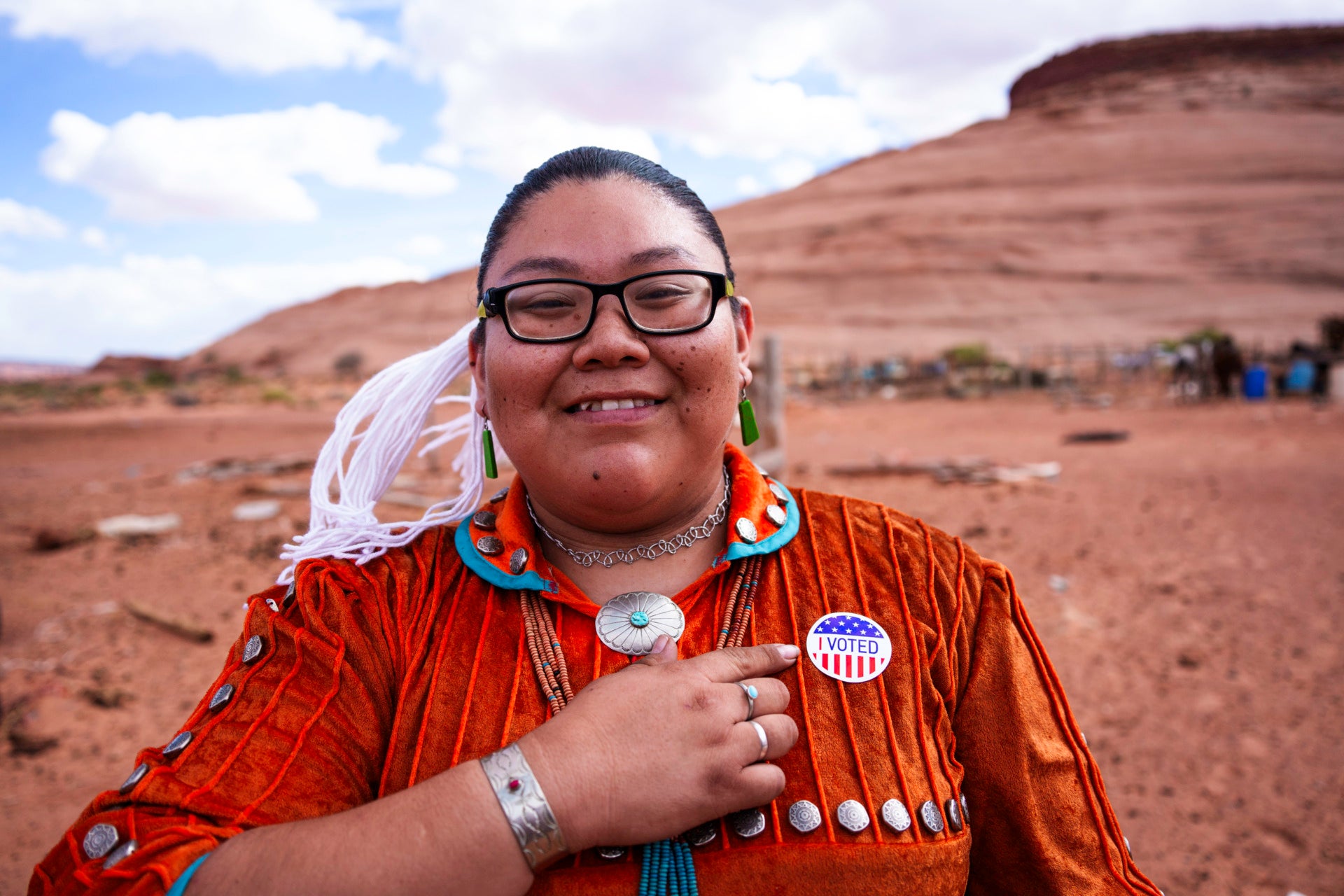Corporate pledges abound, but actions speak louder than words – and money speaks the loudest of all.
As businesses across the country confront their role in systemic racism and oppression, companies are issuing pledge after pledge to appease their shareholders, customers, and employees. While movement from the biggest brands is laudable, it is also wholly insufficient. In most cases, a pledge does not strike to the heart of the power that business leaders have in shaping whose voice gets heard – and whose has remained silenced. While foundations and philanthropies are pivoting quickly to invest in anti-racist work, corporations have yet to invest in one place they could make immediate, exponential change: at conferences and with their sponsorship dollars.
The $100 billion conference industry, almost completely shut down since March due to Coronavirus, represents a massive potential investment in what could be invested now and in the future into squarely racial equity work. Why does it make sense to invest this money – as a short-term action to counter racism, and as a long-term investment in closing the wealth gap?
Because across the United States, leadership at the largest companies are disappointingly non-diverse. Among Fortune 500 companies, there are only four Black CEOs, and 37 women – less than 8%. Companies haven’t been doing enough internally to promote equity – or using their sponsorship dollars to influence others to change.
Brands Must Change their Approach or Risk Suffering the Consequences
Racist policies, business practices, and cultural norms work hand-in-hand with implicit bias, creating systemic barriers to equality throughout society. In the business of events, the result is a pernicious cycle that continues to deny opportunity, visibility, and voice to the people of color who are equipped to change our most influential corporations. Events managers choose speakers based on resumes, and the vetting often boils down to three questions: Who’s spoken for us before? Who’s speaking at other conferences? Who’s got the most senior job title?
When corporations sponsor events without inquiring or requiring diversity strategies to be set in place, they are perpetuating a system of racial inequality. Sponsors and events managers alike need to recognize their complicity, understand its impact, and intentionally design every speaking opportunity centering people who represent the diverse swath of people across America now and in the future. If we don’t have corporate leaders that look like the rest of us, we’ll never create the policies and products to solve the problems that middle America faces.
Further, without designing diverse events guided by explicit anti-racist policies, sponsors will experience backlash (attendees are increasingly calling out “manels” and “Whanels” at events, or pointing out when “impacted individuals” are omitted from the stage); will upset speakers, especially those who have experienced racism in the workplace; and may appear tone-deaf or risk cancellation when panels don’t reflect the racial and ethnic makeup the moment demands. For example, after George Floyd’s murder, the nation’s awareness of systemic racism soared – some events which didn’t include speakers representing the Black experience were cancelled or postponed.
Investing in Equity Today, Leveling the Leadership Platform Forever
Sponsors and event organizers alike are uncomfortable setting standards that include a minimum percent of speakers heralding from diverse backgrounds. This discomfort is grounded in our subconscious conditioning to not talk about race – and it’s counter-productive. There are other forces at play: events brag about their high percent of C-Suite speakers; sponsors often nominate speakers based on their top ranks. But where there are competing goals, we must articulate how we will prioritize, and double-down on racial equity, not self-promotion. We must take a big leap forward to the world we want to see, not the one we have.
We must be bold in our ambitions and transparent with our experience. For example, for a series of 10 discussions responding to the financial challenges households face during COVID-19, a series I led at The Aspen Institute Financial Security Program, we achieved: 54% of our speakers were Black, Indigenous or People of Color; and 56% women (of 50 total speakers). Of the over 150 nominees considered: 41% were Black, Indigenous, and other People of Color (BIPOC); 41% were women. These results don’t mean that our work is done; we know that there is much more to do to ensure our events are inclusive and accessible in the fullest sense – and not just on-stage representation.
Diversity on conference stages goes beyond the “percent” of BIPOC speakers. (Indeed, if our focus is “diversity,” we should ask: “Diverse from whom?” and confront the default.) Creating a standard where people are intentionally selected for their expertise and their identities, within our society’s vast array of socio-economic backgrounds; gender identities and sexual orientation; disabilities and health conditions; alongside racial and ethnic classification.
Here are some specific tactics that sponsors and events organizers can use to guide their own diversity strategies:
- Understand what “diversity” looks like in your industry, and why. Each sector is different, but we all share the same history of oppression for BIPOC individuals. Black opportunity in the workplace has never looked the same way for Whites. Similarly, understanding that people of color do not face the same conditions equally: Native Americans and Asian-Americans, for example, encounter vastly different experiences. Understand intersectionality, including for people living with disabilities.
- Set diversity goals that reflect the demographics of the problem you’re solving for. If your topic is one that disproportionately affects certain communities, you need to over-represent them on stage (because no one person can speak for an entire community). Consider the role of “impacted individuals,” or people who have experienced the issues you’re discussing.
- Set explicit and supportive metrics that will achieve speaker diversity – and understand which ones don’t. If metrics like “percent of C-Suite speakers” are working against your “percent of speakers identifying as BIPOC—” notice it and stop prioritizing it.
- Build new networks. White sponsors, marketers, and events managers must not simply rely on People of Color to nominate speakers — do the work yourself.
- Consider paying BIPOC. Pay them for their participation on advisory boards and speaker selection working groups. Consider offering honorariums for all BIPOC speakers. If you use a speaker’s bureau, ask them if they’ve done a pay equity survey for their speaker rates – and prioritize a BIPOC speaker.
- Create a Code of Conduct. Ground rules calling out implicit bias (jokes, dismissiveness, and talking-over) and sharing a commitment to anti-racist behaviors can help curb those activities. Publish it and share it widely with speakers and attendees.
When Speakers Should – and Shouldn’t — Be Silent
Speakers also have a responsibility to break the cycle. White leaders, each time you are invited to be a speaker or moderator, ask who else is on the panel, and how the organizers prioritize diversity throughout their event. Hold them to a standard. Offer your spot to a person of color if the conference organizer isn’t meeting the standard.
We all – sponsors, speakers, moderators, events planners, and attendees — have the power to change the trajectory of someone’s life by putting them on stage. Corporations need to own up to their economic power to demand change – both internally, in addressing equity in the workplace which includes a speaker cultivation strategy for its rising Black, Indigenous, and Latinx leaders, and externally, wherever it spends its sponsorship money.
One of the most powerful moments I’ve witnessed in my decade-and-a-half as an events organizer was this: We closed a conference with a panel of people who’d previously spoken over the past two days, asking them rapid-fire questions, asking them to hold up a “Yes”, “No”, or “Maybe” sign. The moderator asked, “Is the social contract between employers and employees breaking down?” Four of the five panelists had slightly diverging views, “Maybe, Yes, Yes, Maybe.” A Black woman from a very large financial firm was the only one who held up “No.” The CEO then asked her, “Why?”
“For some people,” she said, “It never existed.”
Corporations have an immediate opportunity to put their money where their pledges are – they should use it to hold up the voices of those America most needs to hear. Doing so would help achieve equity at our top companies, and in doing so, be one modest step forward to close the wealth gap.

